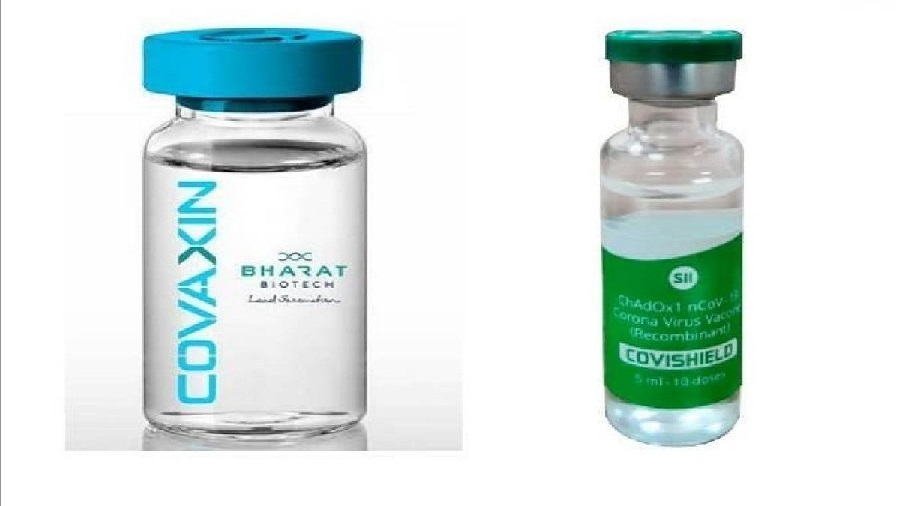
The second phase of the COVID-19 vaccination drive has already begun in India, and many people are still unaware of how the two vaccines – Covaxin and Covishield – are different from each other.
The second phase began on March 1, in which people over the age of 60 and those above 45 with associated comorbidities can take the life-saving shots.
Currently, the government hasn’t allowed people to decide which vaccine they want to get, but the result of the first phase clearly suggests that both the vaccines being inoculated in India are safe and effective.
Well, we have compiled all the information to give you a better understanding of the formulation and every other detail about the vaccine you are going to get to stay safe from the Coronavirus. Have a look –
Developer
Covaxin has been developed by Hyderabad-based Bharat Biotech International Ltd in association with the Indian Council of Medical Research (ICMR) and the National Institute of Virology (NIV).
Covishield has been developed by the Oxford-AstraZeneca and is being manufactured by the Serum Institute of India (SII).
Type of Vaccine
Covaxin is an inactivated vaccine, which has been prepared on a tried and tested platform of dead viruses.
This vaccine is developed with Whole-Virion Inactivated Vero Cell-derived technology. They contain inactivated viruses, which can not infect a person but still can teach the immune system to prepare a defence mechanism against the active virus.
These conventional vaccines have been in use for decades now. There are vaccines for some other diseases as well which are made using the same technology. These diseases are –
- Seasonal influenza
- Rabies
- Polio
- Pertussis, and
- Japanese encephalitis
Covishield has been prepared using the viral vector platform which is a totally different technology.
A chimpanzee adenovirus – ChAdOx1 – has been modified to enable it to carry the COVID-19 spike protein into the cells of humans. Well, this cold virus is basically incapable of infecting the receiver but can very well teach the immune system to prepare a mechanism against such viruses.
The exact technology was used to prepare vaccines for viruses like Ebola.
Doses
There is no difference between the two vaccines in terms of dosage. Both of them follow a two-dose regimen, administered 28 days apart.
Storage Guidelines
Both Covishield and Covaxin can be stored at 2-8 degrees Centigrade, which is a household refrigerator temperature. This makes both the vaccines most suited for Indian conditions as most of the vaccines here are kept at the same temperature range.
This also makes the transportation and storage of both vaccines easier.
Efficacy
Both the vaccines have shown more than satisfactory results ever since the inoculation started in India.
The effectiveness of the Covishield vaccine is nearly 90% as per the global reports and Covaxin’s 81% according to interim 3rd phase trial results.
Covishield, on the other hand, has shown a very satisfactory efficacy of 62 percent.
Approvals
Covaxin has been granted a restricted-use authorization in clinical trial mode, while Covishield has been allowed for restricted use in emergency situations that can potentially prevent coronavirus infection in people aged 18 years and above.
However, the Drugs Controller General of India (DGCI) has not given a market use authorization clearance to any of the vaccines till now.
Price of the vaccines
Both the vaccines are being inoculated free of cost at government health set-ups. The government has put a price capping of Rs 250 per dose for private hospitals and clinics.
Mode of administration
Both Covaxin and Covishield are intramuscular vaccines.
Age of beneficiaries
Covishield has been approved for people aged 18 years and above, while Covaxin can be given to people aged 12 years and above. There, however, isn’t any assurance if the vaccine can be given to children and pregnant women.
Follow this link to join our WhatsApp group: Join Now
Be Part of Quality Journalism |
Quality journalism takes a lot of time, money and hard work to produce and despite all the hardships we still do it. Our reporters and editors are working overtime in Kashmir and beyond to cover what you care about, break big stories, and expose injustices that can change lives. Today more people are reading Kashmir Observer than ever, but only a handful are paying while advertising revenues are falling fast. |
| ACT NOW |
| MONTHLY | Rs 100 | |
| YEARLY | Rs 1000 | |
| LIFETIME | Rs 10000 | |










